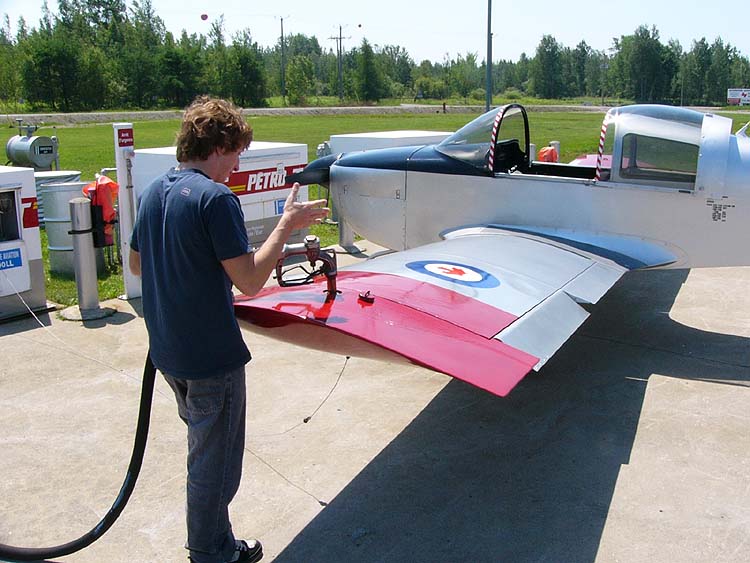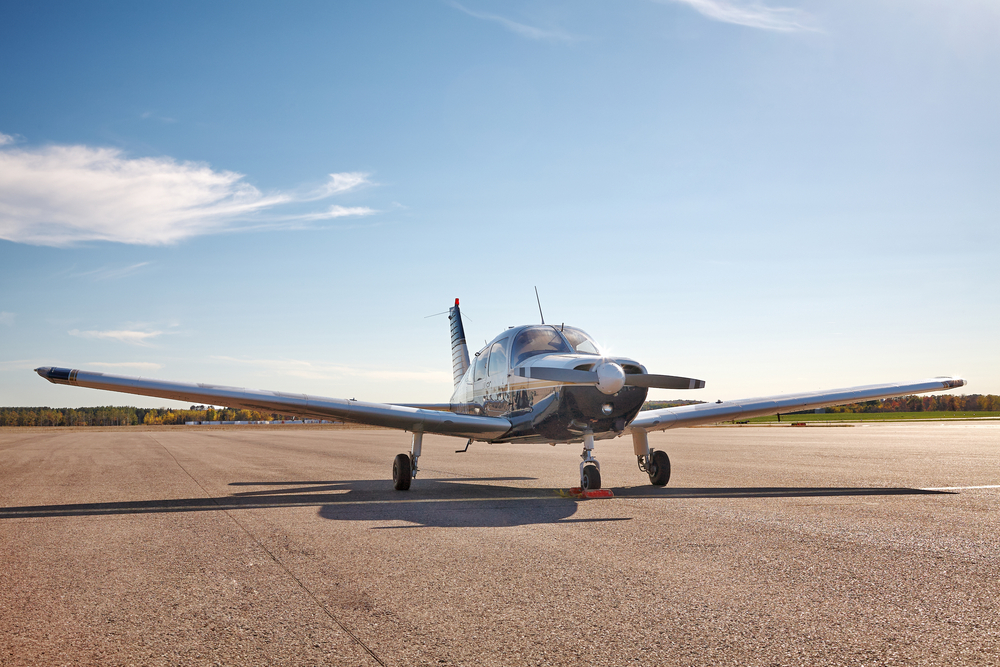Fuel’s one of your biggest variable costs in aviation, and honestly? The price swings are wild. One month you’re paying $5/gallon, next month it’s $7. Understanding what you’re buying and where to find decent prices saves real money over time.
Quick Answer: 100LL (low-lead avgas) costs $5-$8/gallon at most GA airports as of 2025, averaging $6.50. Jet-A costs $4-$7/gallon, averaging $5.50. Prices vary hugely by location – rural airports charge $2-3/gallon more than busy metros due to lower volume. Self-serve pumps save $0.50-$1.50/gallon versus full-serve. Use ForeFlight, FltPlan.com, or AirNav to find cheap fuel along your route. Buying fuel at expensive airports for a 50-gallon fill costs $100-$150 more than planning fuel stops strategically. 100LL contains tetraethyl lead (being phased out), Jet-A is basically kerosene. Don’t mix them up – putting Jet-A in an avgas engine destroys it.
100LL – Avgas for Piston Engines
100LL’s what most piston aircraft burn. The “100” is the octane rating (like 87/93 octane at car gas stations), “LL” means low-lead. It’s got tetraethyl lead added to increase octane and prevent detonation in high-compression engines. Yeah, lead – same stuff that got banned from car gas in the 1970s. Aviation’s still using it because there’s no drop-in replacement yet.
Average price nationwide is around $6.50/gallon in 2025, but it varies crazy amounts. Busy airports with high volume might sell it for $5.00-$5.50. Rural airports with one pump? $7.50-$8.50. I’ve seen spreads of $3/gallon between airports 50 miles apart. Always check prices before filling up.
Why’s it expensive? Low volume compared to car gas, specialized refining, limited distribution network, liability costs, environmental fees. Plus some airports just gouge because they can – captive audience of pilots who need fuel.
Jet-A for Turbine Engines
Jet-A’s for turbine engines – turboprops, jets, some diesel piston engines. It’s basically kerosene, similar to diesel fuel but with additives for high-altitude freezing prevention. No lead. Burns cleaner than 100LL.
Usually $0.50-$1.50/gallon cheaper than 100LL because it’s produced in way higher volumes (all commercial jets use it). Average is around $5.50/gallon but again, huge variation by location. Major airline hubs have cheaper Jet-A. Small rural airports might charge $6.50-$7.50.
Turbine aircraft burn way more fuel than pistons – TBM 940 burns 50 gallons/hour, King Air 200 burns 80-100 gallons/hour, jets burn 150-300+ gallons/hour. Fuel costs become massive quickly. That’s why turbine pilots obsess over fuel planning and finding cheap fuel.
Price Variations by Location
Location’s the biggest price factor. Here’s what I’ve seen:
Major metropolitan airports: $5.00-$6.00/gallon 100LL. High volume means distributors deliver often, competition between FBOs keeps prices somewhat reasonable. Still more expensive than driving to the gas station for your car, but better than alternatives.
Mid-size airports: $6.00-$7.00/gallon. Less volume, less competition. One or two FBOs set prices however they want.
Small rural airports: $7.00-$8.50/gallon, sometimes higher. Fuel trucks comes once a month, storage costs are high relative to sales, they charge whatever they need to make it worthwhile. It’s expensive but sometimes it’s your only option.
Remote/backcountry strips: $8.00-$12.00/gallon if they even have fuel. Getting fuel to remote strips is legitimately expensive – someone’s flying it in or trucking it over terrible roads. Premium’s justified, but plan ahead to avoid needing it.
Coastal and island airports are expensive. Airports near major metros are cheaper. Midwest and south generally cheaper than coasts. But there are exceptions – shop around.
Self-Serve vs. Full-Serve
Self-serve pumps save you $0.50-$1.50/gallon typically. You pump it yourself, swipe a credit card, done. No FBO personnel, no waiting around. I use self-serve whenever possible.
Full-serve means a line guy comes out, pumps your fuel, checks your oil, maybe washes your windscreen. Nice service, costs more. Worth it if you’re in a jet and filling 500 gallons – you don’t want to be out there for 30 minutes pumping. But for a 172 needing 30 gallons? Do it yourself and save $30-$40.
Some airports only have full-serve. High-end FBOs cater to jets and charge accordingly. Nothing you can do except pay it or fly somewhere else for fuel.
Finding Cheap Fuel
ForeFlight shows fuel prices on airport pages – updated by users and FBOs. Pretty accurate most of the time. Filter by cheapest fuel within X miles of your route. A 20-minute diversion to save $2/gallon on a 50-gallon fill saves you $100. Worth it.
FltPlan.com and AirNav.com have fuel price databases too. Cross-reference multiple sources – sometimes prices are outdated. Call the FBO if you’re planning a fuel stop specifically for cheap prices. “Hi, your listed price is $5.50, is that still current?” Saves you from unpleasant surprises.
Apps like Foreflight let you plan fuel stops along routes. Enter your aircraft’s fuel burn, it shows which airports have fuel and what they charge. Plan strategically – sometimes deviating 15 miles to a cheaper airport beats landing at the convenient expensive one.
Fuel Cards and Discounts
Some fuel programs offer discounts: AOPA, CAA, UVair, others. You prepay or use their credit card, get $0.10-$0.30/gallon off participating FBOs. Savings add up if you fly a lot. Most have annual fees ($50-$100), so calculate whether you’ll save more than the fee.
AOPA membership includes fuel discounts at some FBOs – might save you $50-$150/year depending on how much you fly. Not huge, but if you’re a member anyway, use it.
Fuel cards also simplify accounting if you’re flying for business. One monthly bill with all fuel purchases, easier to track than dozens of receipts.
Fuel Contamination and Quality
Always sump your fuel before flight – drain a bit from each tank and check for water or contamination. Water in fuel looks cloudy or you’ll see distinct layers. Contamination might look dark or have particles.
Fuel quality’s generally good at busy airports – fresh fuel, regular deliveries, well-maintained tanks. Sketchy at airports that sell 1,000 gallons per month – fuel sits in tanks for weeks, water accumulates, crud builds up. I’m more careful sumping at low-volume airports.
If you get bad fuel, drain it and complain to the FBO. They should comp you or provide clean fuel. Don’t fly with contaminated fuel – engine failures are bad.
Future of Av fuel
100LL’s being phased out due to lead emissions. GAMI G100UL is an unleaded 100-octane avgas that’s getting approved. Swift 100SF is another option. Transition’s happening but slow – might take 5-10 years before unleaded’s widely available.
Electric and hybrid aircraft are coming but years away from mainstream. Sustainable aviation fuel (SAF) is being developed. For now, we’re stuck with 100LL for most piston aircraft.
Expect prices to stay volatile. Oil prices, refinery capacity, taxes, environmental fees all affect avgas prices. Budget $6-$8/gallon for planning purposes. If it’s cheaper, great. If it’s more, you’re prepared.



Leave a Reply